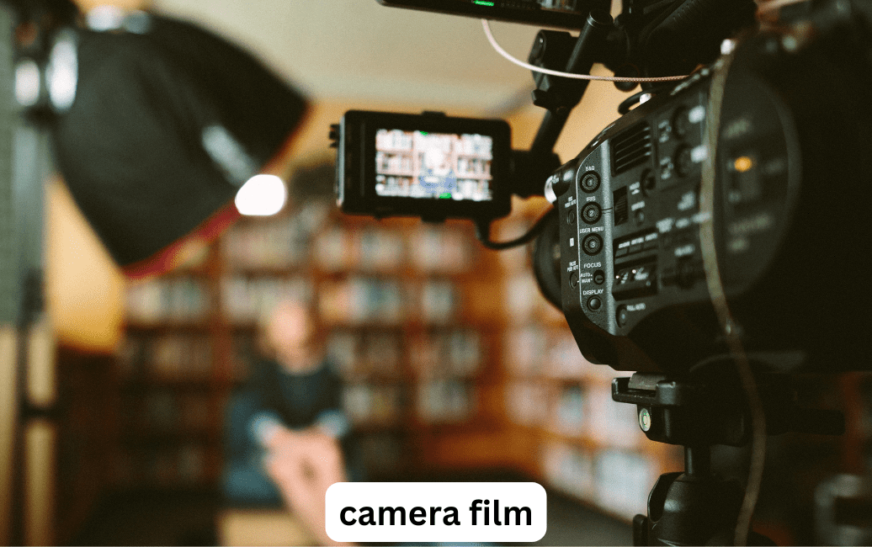Camera film, also known as photographic film, is a medium used in analog cameras to capture images. It consists of a thin strip of plastic coated with a light-sensitive emulsion, which records the image when exposed to light. Available in various formats like 35mm, medium, and large format, camera film offers a unique aesthetic that digital photography can’t replicate, characterized by rich colors, grain, and a distinct depth. Despite the rise of digital cameras, film photography remains popular among enthusiasts for its nostalgic value and artistic quality.
In the digital age, where smartphones and digital cameras dominate, you might think that camera film is a relic of the past. However, film photography is experiencing a renaissance, and many photographers are rediscovering the art and charm of shooting with film. In this comprehensive guide, we’ll delve deep into the world of camera film, covering everything from its history and types to how to choose the right film for your needs. We’ll also answer some frequently asked questions to help you better understand and appreciate the nuances of camera film.
What Is Camera Film?
Camera film is a medium used to capture images through a chemical process. Unlike digital sensors that convert light into electronic signals, film captures images using light-sensitive chemicals. When exposed to light, these chemicals undergo a reaction that creates a latent image, which is then developed into a visible photograph.
The Evolution of Camera Film
The journey of camera film began in the early 19th century.
Early Beginnings (1830s-1880s): The first successful photographic process was invented by Joseph Nicéphore Niépce and Louis Daguerre, known as the daguerreotype. This was followed by the calotype process, which used paper negatives.
- Cellulose Film (1888): George Eastman revolutionized photography by introducing the Kodak camera, which used flexible cellulose film. This was a significant advancement over glass plates, making photography more accessible to the masses.
- Color Film (1935): Kodak introduced Kodachrome, the first successful color film, which enabled photographers to capture images in vibrant colors.
- Digital Revolution (2000s): The rise of digital photography led to a decline in film usage. However, film photography has seen a resurgence in recent years due to its unique aesthetic and the tactile experience it provides.

Types of Camera Film
Camera film comes in various types, each suited for different styles of photography. Here are the most common types:
1. Black and White Film
Black and white film captures images in shades of gray. It’s known for its timeless and classic look, allowing for high contrast and rich textures. Popular types include:
- Kodak Tri-X: Known for its flexibility and wide exposure latitude.
- Ilford HP5+: Offers fine grain and excellent tonal range.
2. Color Negative Film
Color negative film produces images with a color negative that must be printed onto paper to get a positive image. It’s popular for its ease of use and wide exposure latitude. Examples include:
- Kodak Portra: Renowned for its natural color reproduction and fine grain.
- Fujifilm Superia: Offers vibrant colors and good contrast.
3. Color Reversal Film (Slide Film)
Color reversal film, or slide film, produces a positive image directly on the film. It’s known for its high color saturation and sharpness. Examples include:
- Fujifilm Velvia: Famous for its vibrant colors and sharpness.
- Kodak Ektachrome: Provides accurate colors and fine grain.
4. Instant Film
Instant film allows you to get a physical print of your photo almost immediately after taking it. Popular brands include:
- Fujifilm Instax: Offers a range of formats and is known for its ease of use.
- Polaroid Originals: Known for its classic look and instant gratification.
5. Specialty Films
Specialty films cater to niche interests and artistic styles. Examples include:
- Infrared Film: Captures wavelengths of light beyond the visible spectrum, creating surreal effects.
- Lomography Films: Known for their unique, experimental qualities and vibrant colors.
How to Choose the Right Camera Film
Selecting the right film depends on various factors, including your shooting style, desired results, and the conditions you’ll be shooting in.
1. Determine Your Style
Consider whether you prefer the classic look of black and white, the rich colors of color negative, or the vivid hues of slide film. Each type has its own aesthetic and will influence your final images.
2. Assess Lighting Conditions
Film sensitivity, measured in ISO, determines how well a film performs in different lighting conditions. Lower ISO films (e.g., ISO 100) are ideal for bright conditions, while higher ISO films (e.g., ISO 800) perform better in low light.
3. Consider Grain and Sharpness
Different films have varying levels of grain and sharpness. Fine-grain films are suitable for detailed and sharp images, while high-grain films offer a more textured, artistic look.
4. Budget and Availability
Film prices can vary, and some types may be harder to find. Consider your budget and the availability of your preferred film before making a purchase.

How to Use Camera Film
Using camera film involves a few distinct steps compared to digital photography.
1. Loading Film
Open your camera’s film compartment, insert the film roll, and thread the film onto the take-up spool. Close the compartment and advance the film to ensure it’s properly loaded.
2. Shooting
Set your camera’s exposure settings according to the film’s ISO rating. Compose your shot, adjust focus, and take the photograph. Be mindful of your film’s capacity, as most rolls hold 24 or 36 exposures.
3. Developing Film
After finishing a roll, you need to develop the film to make your images visible. You can either develop the film yourself using a darkroom and chemicals or take it to a professional lab.
4. Scanning and Printing
Once developed, you can either scan the negatives to create digital copies or make prints directly from the negatives. Many labs offer both scanning and printing services.
The Resurgence of Film Photography
In recent years, film photography has seen a resurgence among both enthusiasts and professionals.
1. Nostalgia and Aesthetic
Many photographers are drawn to the nostalgic and unique aesthetic of film. The grain, color rendition, and dynamic range offer a distinctive look that digital sensors often struggle to replicate.
2. Tactile Experience
Film photography provides a hands-on experience that digital photography lacks. The process of loading film, manually setting exposure, and waiting for development adds to the overall enjoyment of photography.
3. Artistic Expression
Film allows for creative experimentation and artistic expression. From manipulating developing times to using alternative photographic processes, film opens up a world of creative possibilities.
4. Collectibility and Vintage Appeal
Vintage cameras and film stocks have become collectible items. Many photographers appreciate the historical value and craftsmanship of older cameras and film types.
FAQs About Camera Film
1. How long does film last before it expires?
Film typically has a shelf life of several years if stored properly. Check the expiration date on the film canister, and store film in a cool, dry place to maximize its longevity.
2. Can I use any film in any camera?
Not all films are compatible with all cameras. Ensure your camera is designed to use the type of film you’ve chosen (e.g., 35mm or medium format). Check your camera’s specifications and the film’s format before loading.
3. How do I store exposed film before developing it?
Store exposed film in a cool, dry place away from light. If possible, keep it in a sealed container or a film canister to protect it from dust and environmental factors.
4. What are the differences between film and digital photography?
Film photography captures images using a chemical process, while digital photography uses electronic sensors. Film offers unique aesthetic qualities and a tangible process, while digital photography provides convenience, instant feedback, and extensive post-processing capabilities.
5. Can I develop film at home?
Home developing allows for greater control over the process but requires careful attention to detail and cleanliness. Alternatively, you can send your film to a professional lab for development.
Conclusion
Camera film continues to captivate photographers with its rich history and unique qualities. Whether you’re a seasoned film enthusiast or new to the medium, understanding the different types of film and how to use them can enhance your photography experience. Embrace the art of film photography and explore its possibilities—each roll of film offers a chance to capture moments with a timeless charm that digital photography often struggles to match.
By following this guide, you’ll be well-equipped to dive into the world of camera film, making informed choices and enjoying the creative process that film photography has to offer.













